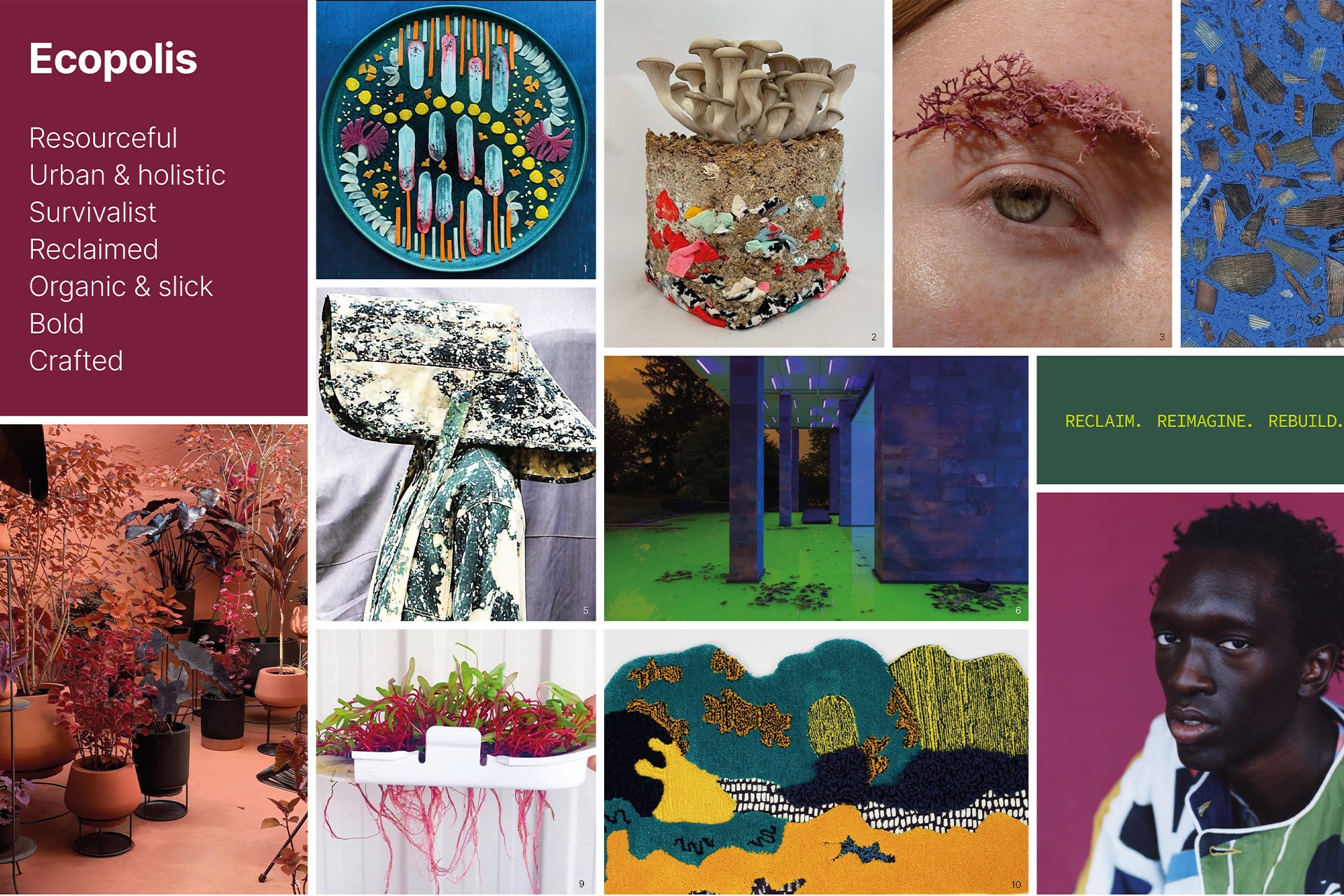Consumers around the globe are looking to their homes now more than ever to help them perform a rotating – and sometimes overlapping – number of functions: working, resting, playing, cooking, creating and nurturing, to name a few, said Kate Usher of global trend forecasting firm TrendBible.
Usher began by explaining that the framework from which TrendBible evaluates the future involves “mega” and “macro” trends. Current megatrends, which typically last 15 years, include sustainability, urbanization, equality, post-consumerism, globalization, digital age, aging population, holistic health and shifting power, Usher said.
Macro trends are much shorter and incorporate two or more megatrends, Usher explained. “Sometimes a change is really obvious, i.e., a pandemic lockdown, and sometimes it’s much more discrete or gradual,” she said.
After identifying each year’s macro trends, TrendBible creates four trend stories for its seasonal trend books. These forecasts incorporate how the macro trends and seasons will work together to influence product shape, material, pattern and color.
The four macro trends identified by TrendBible for 2024 are Democratizing Domesticity, Hybridized Home, Rise of Rental and Circular Thinking.
Democratizing Domesticity
Traditional living arrangements and nuclear families are becoming less common as “consumers are adjusting their living situations like never before,” Usher said. These changes might be the result of the rising cost of living or consumers reassessing lifestyles and locations.
The average household size is decreasing (now 3.3 people), as is the number of nuclear families. In the U.S. alone, just 18% of households are nuclear families, down from 40% in the 1970s and at the lowest point since 1959, according to census data.
Twenty-three percent of U.S. children live in single-parent households, though some households might have become larger as multiple generations join forces. Thirty-eight percent of the world’s population lives in extended family situations, Usher said.
The bottom line? “Consumers are shunning traditional family set-ups to create living solutions that cater to their extended family, whether that be a new partner with children from a previous marriage, children living at home into adulthood or the grandparents moving in,” Usher noted.
The Hybridized Home
Non-traditional households create a need for non-traditional home setups. As consumers reassess their living spaces to accommodate different members of the family, there will be a growing need for home and housewares products that provide unique solutions and/or flexibility, Usher said.
That need will be amplified in the coming years as a growing number of employers around the world make permanent the hybrid or remote working arrangements that developed during the Covid-19 pandemic. These two factors will combine to make multifunctional products boom in popularity, Usher said, noting the global market for multifunctional furniture is expected to reach $13.2 billion by 2027.
Rise of Rental
Long thought to be the domain of only students and younger adults, the average age of people renting homes has doubled in the past decade, Usher said. People in their 30s and 40s are now three times more likely to rent than they were 20 years ago; even older generations are getting in on the trend. That might be a result of financial challenges, but there also is a growing number of people making the choice to rent for personal, financial or location-based freedom and flexibility.
Interest in renting furniture or other home items is also growing, with a 46% increase in searches related to furniture rentals since July 2017, Usher said.
She recommended home and housewares suppliers create products with renters in mind. That could mean items that can be easily removed or reinstalled, such as decorative adhesives or shower attachments, as well as items that offer personalization and customizable options to help consumers make rented spaces feel like their own. Usher also encouraged the industry to explore the opportunity posed by the older generation of renters and to appeal to sustainably-minded consumers by offering product rental options.
Circular Thinking
Usher said 2024 will mark a dramatic shift for consumers— the biggest one yet— in how they think about sustainability. Consumers will start to look beyond sustainability to how society can move to a regenerative future where we regrow, renew or restore what has been damaged or lost.
Biomaterials will be a big focus in this movement, and Usher shared some early examples in the home space including corn husks, mushrooms and potato skins.
Circular thinking also puts a spotlight on waste, an area that is generating more attention of late. (Consider, Usher said, that 87% of Americans are concerned about plastic and packaging waste.) New applications are appearing every day, such as using reclaimed wood waste or sawdust to make bowls and vases, and there also has been some progress in using industrial waste to make upscale textile dyes, Usher noted.
Autumn Winter 2023/2024 Seasonal Trend Story: Ecopolis
Looking ahead to this fall, Usher previewed one of the seasonal trend stories in TrendBible’s Autumn Winter 2023/2024 trend book.
“Ecopolis” represents “a more holistic approach to sustainability,” “a refreshed take” and “an appreciation that (eco-friendly practices) are not going to have the same final effect on each product,” Usher noted. It is driven by a combination of intersectional environmentalism, access to nature, modern biophilia and the circular economy.
Dazzling reds, bold blues and lively chartreuse coloring Ecopolis indicate this is not the same old environmental story of the past, Usher said. Adjectives used by Usher to describe the story were “urban,” “slick,” “bold,” “resourceful” and “crafted.”
Usher said salvaged materials play a big part in the story, as do vibrant dyes from sustainable sources. She gave examples of how this story can be applied to home accessories for playful, organic and energetic effects.





